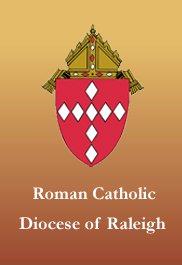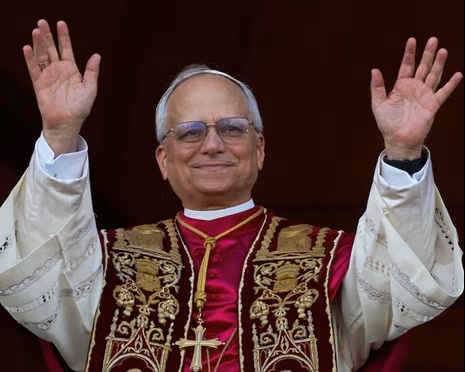The History of St. Stanislaus Roman Catholic Church
 In January, 1907, three Catholic families established residence in the Castle Hayne, NC area, a rural family farm community north of Wilmington. The families either attended Mass in Wilmington or it was celebrated in a private home. These first Masses, held in the homes of the families, were usually celebrated by Monsignor Christopher Dennen from Wilmington. Nuns from the Wilmington parish would make regular visits in support of children’s education. By early 1914, the Castle Hayne Catholic community had grown to eighteen families. In the spring of 1914, the small group obtained ten acres of land through a donation of the Hugh McRae Development Company, a real estate promoter from Wilmington, and the process of constructing a church was started. Funds to support construction came from family donations and the Catholic Extension Society of Chicago, IL. Mr. Thomas Hayduke was responsible for most of the construction, which started in 1916. Dedication of the church was held in June 1916 by Bishop Haid, with Father Dennen offering the Mass.
In January, 1907, three Catholic families established residence in the Castle Hayne, NC area, a rural family farm community north of Wilmington. The families either attended Mass in Wilmington or it was celebrated in a private home. These first Masses, held in the homes of the families, were usually celebrated by Monsignor Christopher Dennen from Wilmington. Nuns from the Wilmington parish would make regular visits in support of children’s education. By early 1914, the Castle Hayne Catholic community had grown to eighteen families. In the spring of 1914, the small group obtained ten acres of land through a donation of the Hugh McRae Development Company, a real estate promoter from Wilmington, and the process of constructing a church was started. Funds to support construction came from family donations and the Catholic Extension Society of Chicago, IL. Mr. Thomas Hayduke was responsible for most of the construction, which started in 1916. Dedication of the church was held in June 1916 by Bishop Haid, with Father Dennen offering the Mass.
St. Stanislaus remained a mission of St. Mary Catholic Church in Wilmington until 1933. During this time a priest traveled from Wilmington about twice a month to say Mass. In that year, Father Sheurich, a diocesan priest, was appointed Pastor at St. Joseph, St. Helens, NC, located about fifteen miles north of Castle Hayne and assumed support of St. Stanislaus. In 1935 the Conventional Franciscan Friars of Immaculate Conception Province assumed pastoral care at St. Joseph and assigned Father John Munane to the parish. St. Stanislaus continued to be supported by Father John from St. Joseph. The Franciscan Sisters, based in Syracuse, NY, were resident at the St. Joseph School in St. Helena and also supported children’s education at St. Stanislaus.
Church Construction and The Early Years of Growth
Construction of the rectory began in July 1947 and was completed and dedicated in December of that year. In 1950, St. Joseph School closed due to low enrollment, and the Franciscan sisters transferred to St. Stanislaus. During that summer, the efforts of the entire parish were concentrated on relocating and remodeling a surplus administration building obtained from a decommissioned Army facility, Camp Davis. The “new” school, a convent, and parish hall opened on September 5, 1950, with the sisters resident in the convent. Forty-two students enrolled at the start of the school year. Coincident to this, a surplus Army chapel, also obtained from Camp Davis, was relocated to the site and remodeled over the following year. On September 23, 1951, Bishop Waters dedicated the church, school and convent.
School enrollment gradually dropped, and in 1962 the school closed and the Franciscan sisters departed. Due to age and general deterioration of the old school and convent, construction of a new classroom and assembly building was started in 1981 and completed in 1982. Bishop F. Joseph Gossman dedicated the building on May 15, 1982.
Expansion and Revitalization
In 1986, the will of Florence Gralak, one of the original parishioners, named St. Stanislaus Church as a beneficiary. The parish received fifty-one acres of land. This gift was significant and helped the parish furnish assets for future growth.
In 1996 full scale efforts were commenced to construct a new church. This was a difficult decision. The former World War II military chapel had been extensively improved and beautified over the years. Deep emotional attachment was involved with most of the parishioners having been baptized, confirmed, married and had many ancestors interred in the church cemetery. However, the chapel only seated about 200 people, and had been constructed as a temporary wooden building in support of the war effort over fifty years before.
On June 19, 1997, the last Mass was celebrated and all the artifacts were removed and either disposed of or stored under the supervision of Father Douglas Reed. With no suitable purchase offer in hand, the old chapel was burned as a fire fighting training exercise on July 26, 1997; construction of the new church began immediately. The building committee used the services of Jefferies and Faris Assoc., architects and ATD Construction Company, headed by Anthony Dombroski, Jr. Many individuals and organizations contributed funding to support this major construction effort. The estate of Doctor Albert Glod donated funds for construction of the chapel. The beautiful stained glass windows which form a central part of the new church were obtained from several churches in the area of Shamokin, PA. The current facility was completed and dedicated by Bishop F. Joseph Gossman on December 13, 1998 with Father Briant Cullinane as Pastor.
From Provincial to Diocesan Parish
The Franciscan order of priests, which supported St. Stanislaus and other Catholic churches in eastern North Carolina since the mid 1930’s, made the decision to depart, and Bishop F. Joseph Gossman of the Diocese of Raleigh assigned Rev. Ryszard Kolodziej, a diocesan priest as pastor in July 1999.
With the arrival of Fr. Ryszard Kolodziej, St. Stanislaus Parish fervently prayed, studied the Scriptures, theology, history of the church, liturgy, and reached out to those in need within our community. They also organized and held various concerts, picnics, field trips, social gatherings and town meetings to plan for the future.
Over the past few years improvements in parking access and establishing a recreational area in the undeveloped property to the south of the church (that can be used for multiple purposes) have been completed. The parish boundaries were redefined, an accurate record deed was created, and the rectory was purchased. Additionally, the map of the cemetery was produced, the lot was expanded largely, and improvements were made in the social hall which included upgrading the kitchen’s electrical system and appliances.
In a more mundane but important way, adjustments in the parish administration to ensure readiness to manage a larger population have been most successful. Modern office equipment, work procedures and adjustments to work assignments have created a first class office and accounting environment ready to manage a much larger congregation.
Several internal items have added most favorably to the environment surrounding celebration of the liturgy. The most important of these were the completion of the baptismal font, the installation of a new electronic organ, mounting of the Memorial Book and the blessing of two paintings over the altar: Divine Mercy of Jesus and Our Lady of Czestochowa, which encourage the atmosphere of prayer. The painting of St. Stanislaus Kostka, acquired in 2008, enhances the beauty of our Gathering Area. To bring the presence of Christ ever closer to our congregation, we added entrance bells and a new tabernacle, and celebrated the 10th anniversary of the dedication of the present sanctuary.
The Annual Polish Festival fundraiser which started in 1998, has grown each year and now draws attendance from all over North Carolina as well as several neighboring states. Support for the festival involves a majority of the parishioners and is managed by an all-volunteer staff.
On June 25, 2009, the loans on both the church building and the rectory were fully paid off, five years ahead of schedule. The mortgage burning celebration took place on October 4, 2009, to honor the generosity of the parishioners, contributors, and the Polish Festival. In February 2010, the St. Jude Loan (we are the Mother Church of St. Jude Parish in Hampstead, now known as All Saints Parish) was paid off, nine months ahead of schedule. On February 21, 2010 we had the ground breaking ceremony for the new Administration Building. We moved into this new completed building in late August 2010. At the same time the portico at the main entrance of the church and a covered walkway between the church and the new office were added. Additionally, a new metal fence around the cemetery, complete with brick corner columns and a main arch gate were constructed, and the parking lot was resealed. The new administrative office was blessed by Bishop Michael F. Burbidge on December 11, 2010. The ceremony was greeted with joy and enthusiasm by the entire congregation. Other improvements slated for for the future include a new heating/AC system for the hall and landscaping the areas around the church and new administration building. A new modern Parish Hall is in our plans.
Celebrating 100 Years!
In November 2014 our parish celebrated 100 years. We commemorated the day with a celebratory Mass and Consecration of the Parish Cemetery, with Bishop Burbidge visiting from Raleigh to preside. Read More About Our 100th Anniversary Event.
Looking Ahead
We see tremendous growth in our faith and are very proud of all the various ministries active in our parish that enrich the life of the church and neighboring community. We have been blessed with the wisdom of older generations, and the energy of young families with children. The variety of gifts, talents, wonderful personalities and time offered by the generosity of our parishioners keeps the Gospel message alive.





